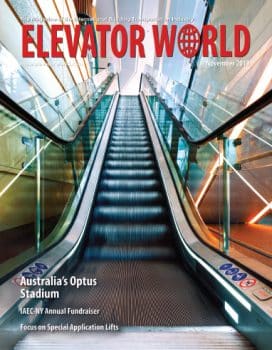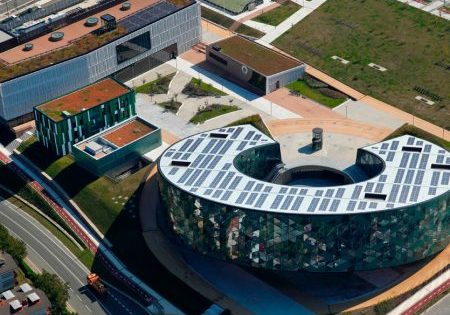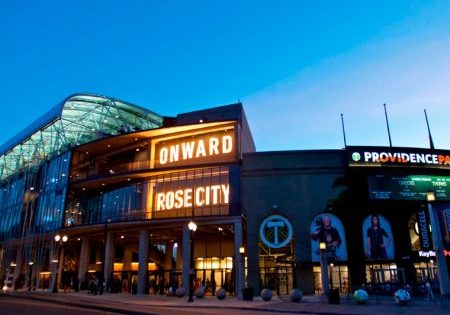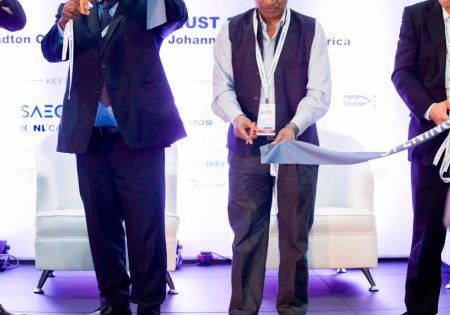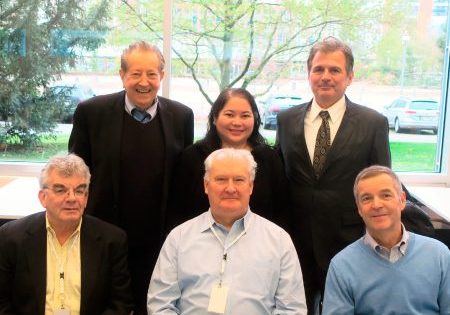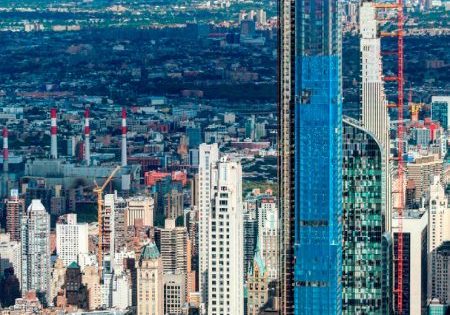10 Questions With Johannes de Jong
Nov 1, 2019
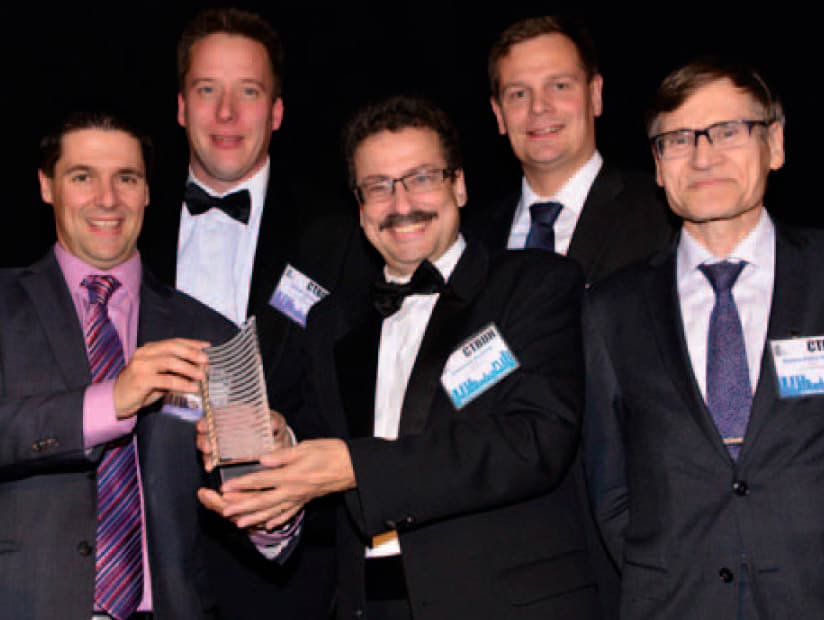
Your author (VP) spoke with Elevating Studios founder and KONE veteran (JD) about the industry and how he got started.
VP: What brought you into the elevator industry, and what made you stay in it?
JD: That’s actually pretty personal. What brought me to the elevator industry was my girlfriend, who is now my wife. When I was studying in the Netherlands, I had a Finnish girlfriend, and these things happen. You fall in love, and you decide to go after her. When studying, I tried to have a long-distance relationship. In the end, it was the last year of my studies, and I had some practical work I still needed to do, so I thought, “Why not try Finland?” It turned out to be a bit difficult, but, in the end, I found some work with KONE. She worked as a buyer in one of the largest bookshops in Finland — the Academic Bookshop in Helsinki — and her boss, Professor Suolahti, was a good friend of Pekka Herlin, the owner of KONE. So, he wrote a letter that said he — the managing director of the bookshop — didn’t want to lose her, so he was asking Pekka if he could employ a student there for some practical work. And that’s how it started. The work was really interesting, and, when I went back after my practical work that lasted nine months, instead of three months, I got a call from R&D. They said I had done good work, so if I was ready, I could go directly to Finland and start at R&D. I was not totally ready. I had my thesis done, but I still had a couple of exams to do, so I went to my professor and asked if I could finish the exams early. Two weeks later, I was in Finland. I progressed pretty fast from a designer, to a project leader, to a project manager and became the first elevator system guy — at KONE, the elevator system guy is the one responsible for future elevator platforms from start to end. That was a pretty big job and while doing that job, KONE was getting very involved in high rises. They asked if I would be interested in becoming their technical director for a new department, which was the High-Rise Center. I, of course, took the job immediately.
VP: What are some of the major industry changes you’ve encountered in your more than 40 years in the industry?
JD: When I came to KONE in 1977 (when I officially started), it was a relatively small European company. They made only 2,300 elevators a year; when I left, they made over 120,000 units a year. That’s practically a 50- to 60-fold increase in elevators. So, it really turned from a family business into a corporate business. The whole atmosphere changed from family to corporate. The whole industry boomed. There were also a lot of companies disappearing, and, during my time at KONE, we acquired a lot of companies. KONE grew through acquisition. It kept growing very fast. So, it was important to incorporate these companies fast and make it work that fast. That was tough work, especially incorporating those companies into our culture.
I still remember we were working on the first big high-rise product totally developed by KONE using the KONE Alta product. At the end of a meeting with management we were asked what we should still do — I thought I would be fired at this moment — but I was honest and said, ‘We need to become one KONE.’ We were a collection of different brands, and we had to become one KONE. Within a year of that, KONE actually began that process to become one KONE. They listened, and they did it. That was really great to make everyone become one family — one big company. That was something fantastic to achieve.
VP: What are some of the most interesting projects or challenges you’ve encountered in your career, and which markets have been the most interesting to work in?
JD: Far too many to mention. There are so many interesting ones. But, London was one of the most interesting markets. The very first job I was involved in was where the Irish Republican Army had just bombed one of the towers in London — 99 Bishopsgate. That was an interesting one, and I met a very interesting person there, Bill Hickey — a sales guy for the company — and I got a very long friendship out of that first meeting there. I distinctly told the UK guys, ‘You have to rip out all the rails,’ because they were planning to leave them. They had to rip them out, or it wouldn’t be the quality job it was supposed to be. That was a kind of language they didn’t expect — that I would go so hard against leaving the rails, increasing costs. But, we did it, and it became a very important reference job. It was the first Japanese ride-comfort style project in London, and from there we kept growing.
Another very, very special job for me was the Lloyd’s Register of Shipping. The architect was Richard Rogers, and they wanted to have everything as open as possible. So, for a 100-m-high building, with wind blowing as hard as it can blow in London, that’s not an easy task to do. That was one of the most challenging jobs we have ever done, but it became an absolutely stunning job. It’s still, I think, one of the most beautiful lift installations in London. Other London jobs that really made me a London fan are the Swiss Re tower (the Gherkin); The Leadenhall Building — called the Cheesegrater — not a single piece of equipment was standard on that job; The Shard; and, my last job before I left KONE, Bloomberg London, which is supposed to be the most intelligent and energy-efficient building in the city. London was like heaven for an elevator guy. The elevators are not standard; they always include something special.
VP: Who are some of the most influential people you’ve worked with, and what about them impressed you?
JD: There are so many. Of course, in addition to the famous architects Norman Foster, Adrian Smith, Gordon Gill and Zaha Hadid, there are people I also admire, like Narachi from PCPA, and, of course, Richard Rogers. Those guys, when you give them a job, you never know where you’re going to end up.
For people I’ve met — of course, you meet so many people — royalty, presidents. I worked on the Trump Tower in Chicago, so I had contact with Donald Trump, and I didn’t get fired! That was the great part. A person who really intrigued me a lot — even though I didn’t meet with him very often, but he made a very big impression on me — was Larry Silverstein, owner of the World Trade Center towers. He’s an older gentleman now, but he’s so amazingly energetic and so innovative. He is fantastic.
And, of course, from consultancy world, I worked with all the big names, from which I learned a lot. Kevin Huntington, Jim Fortune, Steve Edgett — you name them, I’ve worked with all of them. We’re all extremely good friends. We’re competitors, but we also provide each other with work. So, if they don’t have time for a job in Asia, they’ll refer to Elevating Studio, and we’ll do the same for them. I’ve learned a lot from them, and we still help each other.
VP: What prompted you to found Elevating Studio Pte. Ltd., and what are some of the challenges you have faced as a new company?
JD: I was 63 already — even though most people say I didn’t look it at the time, I definitely look it at the moment — I could have easily gone to 68 before retiring. I decided to go for my pension and take it, and the reason for that is simple. Michiel de Moel, the other cofounder of Elevating Studio, came to me. He had had enough of corporate life — and, to be honest, I was reaching a similar situation. It was always my responsibility to cut costs, and it became a little bit heavy. Michiel was an expert in the operations of the business. He had run so many businesses before; together we had the knowledge of the product and how the business worked. That is a really unique combination allowing us to work in the best interest of our clients. It also helped that Michiel wanted to invest in the company. Up to now, we’ve never had a loan. That is really what I would call a super deal.
“London was like heaven for an elevator guy. The elevators are not standard; they always include something special.”
The company has 25 people, so it is big for an elevator consultancy. It is hard work, and it wasn’t necessarily profitable for the first two to two-and-a-half years. We started first in Singapore, and that was hard: I came from an industry in which everybody seems to know you — I was known as ‘Mr. KONE’ at many places. So, all of a sudden, you notice that you are a nobody. You have the knowledge, but your new clients are totally different from the old clients. Then, we went to Thailand, after we got Singapore running. Of course, we didn’t make the same mistakes. I was still living in Finland. So, while we have the company in Southeast Asia, I still live in Finland for several reasons. I can’t get my wife to move, so I’m “stuck” in Finland, but I love being in Finland. We also have our grandchildren here. This means I still travel a lot. I go to Asia a lot. Maybe six to eight times a year, I’m there for two to three weeks each time. Finland is on our list of office locations because I’m here, and I need a place to work. Australia was another place where we got an opportunity. It’s hard work to establish yourself, because there are a lot of consultants in Australia, whereas in Southeast Asia, there are mainly mechanical, electrical and plumbing companies.
VP: As one of the initiators of the Council on Tall Buildings and Urban Habitat (CTBUH) Emergency Evacuation Elevator System Guideline, what are your hopes for it?
JD: That all started with 9/11. I was a member of CTBUH already. We were called to a meeting in Chicago to discuss what happened and what could be done to prevent such disasters, why the towers stood so long and what we as the CTBUH would say to the public. We knew we had to find new ways to save more lives. Of course, buildings could not be built to withstand these kinds of attacks. Other authorities had to prevent planes flying into buildings. But it’s also clear that whenever there’s a big catastrophic fire, we had to find new ways to get as many people out of the buildings as possible. So, I made the suggestion to start looking at the guidebook on how to use elevators to evacuate buildings. Work on it was not easy, because the internet was still young. So, we had a big bunch of the brightest people and experts in this business to prepare the guideline. We worked very hard to get the first booklet out. It was acknowledged by authorities in the U.S. and then went into International Building Code and even ASME A17.1 as “Occupant Evacuation Operation.” It’s taking off slowly.
“An elevator investment is maybe 3-5% of the total investment cost in a high-rise building. So, why do we totally shut down such a big investment instead of using it in case of fire or evacuation?”
We have already achieved something, but I’m now looking for a system in which we can use the investment we have in the building. An elevator investment is maybe 3-5% of the total investment cost in a high-rise building. So, why do we totally shut down such a big investment instead of using it in case of fire or evacuation? There is actually considerable time to do something before the smoke spreads and becomes dangerous. I’m trying to put together a CTBUH group with the International Organization for Standardization for risk analysis to look at how we can use that investment we have in the building to save as many lives as possible.
VP: What advice do you have for someone new to the industry?
JD: It is a very wide industry with a lot of disciplines and different topics to learn. In this corporate world, we often see people just focusing on the job they have. The first thing I did when I got into the industry was always ask questions. Whenever I saw something I didn’t understand, I just bothered somebody else and asked them, ‘What’s this, and how does it work?’ My advice to someone new to the industry: use your ears, and never stop asking questions. Keep asking questions. Make yourself as wise as possible.
VP: Where are you from originally?
JD: I was born in the Caribbean on a small island called Aruba. It’s a very nice holiday island, and my dad was there after the war in Indonesia. He was Dutch and in the Dutch navy; he went to Indonesia for the war. He then came back to Holland before going to the Caribbean for the Dutch navy, leaving very soon after. I spent most of my youth in South America and the Caribbean area. We lived in Aruba for a couple of years, then we went to Suriname (Dutch Guyana), and from there, we went to Curaçao. I was there for all my youth until I was about 17; then, I went to Holland to study. I’m Dutch; I have a Dutch passport. Even though I’ve been living in Finland so long now, I’m still Dutch.
VP: What do you like to do in your spare time?
JD: It’s funny. I travel a lot, but I still like traveling. I still come to the Caribbean every year or twice a year. Also, whenever I have time to read, I will read. Reading is something I really like. This is something I had to learn to love. My wife became the buying manager of that book shop she worked at when I first came to Finland. I started reading technical stuff, and I found out quickly that there is so much to learn. I was not a big reader before. I read what I had to to get through university, but I was more of an asker. Reading became part of my life through my wife. I also, of course, enjoy being with my family.
VP: What are some of the best elevator jokes/puns you’ve heard?
JD: I’m horrible at remembering these things, but I like one of them. What do you call an elevator full of well-mannered, sophisticated individuals? A lift. The other one I like very much is: what do you call it when you put a cow in an elevator? You’re raising the steaks.
Get more of Elevator World. Sign up for our free e-newsletter.

